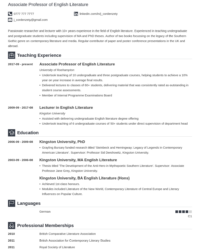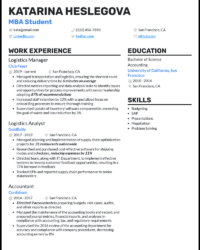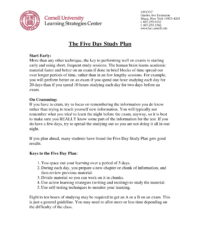Utilizing such a framework offers several advantages. It ensures consistency and professionalism, allowing admissions committees to easily review applications and compare candidates. A well-organized presentation emphasizes key strengths and minimizes potential weaknesses, making a strong first impression. Moreover, it saves applicants valuable time and effort, streamlining the application process by providing a clear structure to follow.
This article will explore key elements of a successful framework for postgraduate applications, offering practical advice and examples to guide prospective master’s students in crafting compelling submissions. Specific sections will address tailoring content to target programs, highlighting relevant skills and experiences, and optimizing the document for clarity and impact.
Key Components of a Strong Master’s Application Document
A compelling application document for master’s programs requires careful consideration of several key components. These components work together to present a comprehensive and persuasive picture of an applicant’s qualifications and potential.
1. Contact Information: Accurate and up-to-date contact details, including full name, phone number, email address, and professional social media links (if applicable), ensure clear communication between applicants and admissions committees.
2. Educational Background: A chronological list of academic institutions attended, degrees earned, majors, minors, GPA, relevant coursework, and dates of attendance provides a clear overview of academic achievements.
3. Professional Experience: This section details relevant work experience, including job titles, company names, dates of employment, and concise descriptions of responsibilities and accomplishments. Focus should be placed on experiences that demonstrate skills and knowledge applicable to the target program.
4. Research Experience (if applicable): Applicants with research experience should highlight projects, publications, presentations, and collaborations, emphasizing the relevance of this experience to their intended field of study.
5. Skills: A dedicated skills section allows applicants to showcase relevant proficiencies, such as technical skills, language fluency, software proficiency, and laboratory techniques, further strengthening their suitability for the program.
6. Awards and Honors: Listing academic awards, scholarships, fellowships, and other recognitions provides further evidence of achievement and potential.
7. References: Providing contact information for two or three professional or academic references allows admissions committees to gather additional perspectives on an applicant’s qualifications. Inform references beforehand to ensure their availability and willingness to provide a recommendation.
Careful attention to these components creates a cohesive and impactful application document, effectively showcasing an applicant’s qualifications and aligning them with the program’s requirements. This structured presentation facilitates efficient review by admissions committees and strengthens an applicant’s candidacy for the program.
How to Create a Document for Master’s Applications
Creating a strong application document requires a strategic approach and careful attention to detail. The following steps outline the process of developing a comprehensive and compelling submission.
1. Select a Suitable Template: Begin by choosing a professional template that provides a clear and organized structure. Consider templates specifically designed for academic applications. A clean and consistent format enhances readability and professionalism.
2. Tailor Content to the Target Program: Thoroughly research the specific requirements and preferences of each target program. Align the content of the application document with the program’s focus areas, highlighting relevant skills and experiences. Customization demonstrates genuine interest and increases the likelihood of a positive response.
3. Quantify Accomplishments: Whenever possible, quantify achievements and contributions using metrics and data. Numbers provide concrete evidence of impact and add credibility to claims. For example, quantify project outcomes, cost savings, or performance improvements.
4. Proofread and Edit Carefully: Thoroughly review the document for grammatical errors, typos, and inconsistencies. Ensure clarity, conciseness, and accuracy in all sections. Consider seeking feedback from mentors or advisors to ensure the document is polished and professional.
5. Save in a Suitable Format: Save the document in a widely accepted and easily accessible format, such as PDF. This ensures compatibility across different operating systems and devices, preserving the intended formatting and layout.
6. Continuously Update and Refine: Regularly review and update the application document to reflect new experiences, skills, and accomplishments. Maintaining a current and accurate document ensures readiness for upcoming application cycles.
A well-crafted application document presents a cohesive narrative of academic and professional qualifications, demonstrating a candidate’s potential for success in a master’s program. Careful planning, attention to detail, and strategic alignment with program requirements maximize the impact of the application and increase the likelihood of a favorable outcome.
A well-structured framework for presenting qualifications and experiences is crucial for successful master’s program applications. This framework facilitates clear communication of relevant achievements and skills, aligning them with program requirements and demonstrating a candidate’s potential. Key components include detailed educational and professional backgrounds, research experience where applicable, a comprehensive skills section, and strong references. A strategic approach to content creation, emphasizing quantifiable accomplishments and tailoring the document to each target program, significantly enhances application strength.
Investing time and effort in developing a strong application document represents a critical step toward achieving academic and professional goals. A compelling presentation of qualifications not only increases the likelihood of acceptance into competitive programs but also lays the foundation for future success in the chosen field. This dedication to presenting a polished and professional application reflects a commitment to pursuing advanced study and achieving long-term career aspirations.


